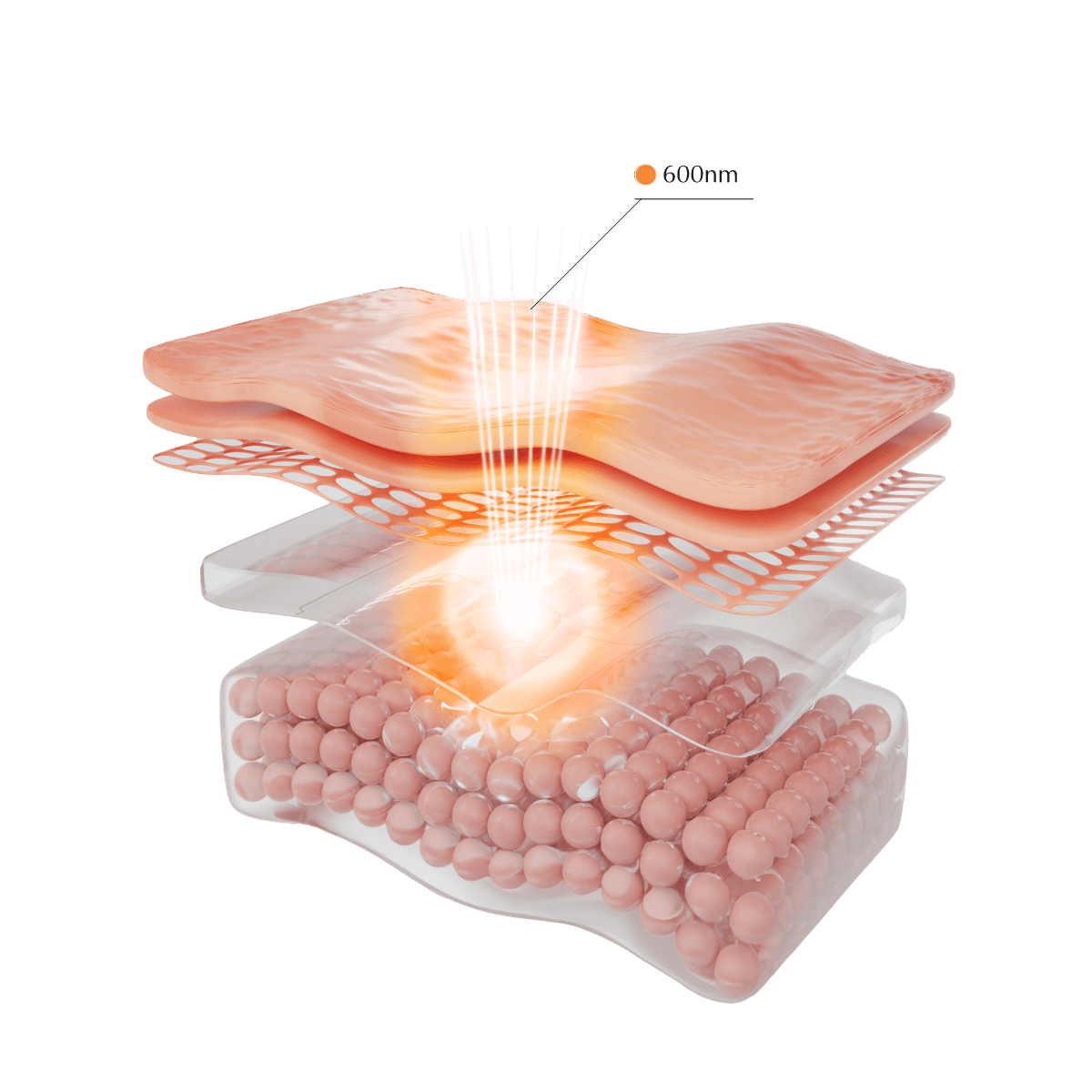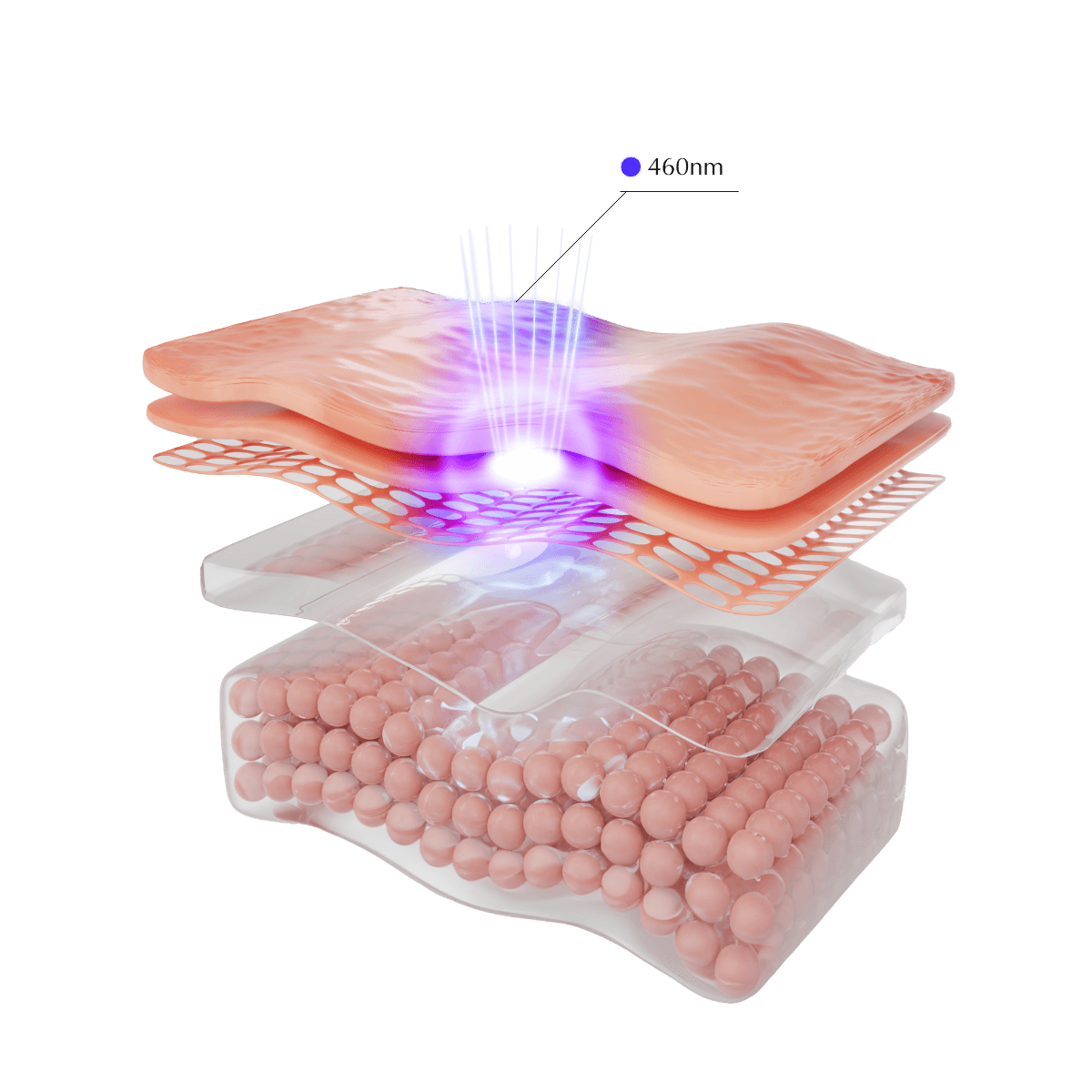Harnessing the Glow: Amber Light Therapy's Role in Skincare
Introduction:
Amidst the spectrum of light therapy colors, amber light emerges as a gentle yet potent force in the skincare world. Its warm, soothing rays, reminiscent of the last rays of a sunset, hold the promise of calmer skin and a brighter complexion. Amber light therapy, with its unique wavelengths typically around 590 nanometers, targets the more subtle layers of the skin, addressing concerns like sensitivity, inflammation, and the ever-elusive quest for even skin tone.
This golden hue of light therapy is not just about aesthetic enhancement; it's a journey into the skin's own rhythms, seeking to balance, restore, and refine. In this exploration of amber light therapy, we'll delve into its skin-loving benefits, supported by scientific research, and discover how it can be integrated into your daily skincare regimen to achieve a harmonious blend of health and beauty.
As we navigate the nuances of amber light and its interaction with skin cells, we invite you to learn how this serene wavelength can be a key ally in achieving a complexion that not only looks good on the surface but feels deeply nurtured from within.
The Luminous Touch of Amber: Understanding Its Skincare Magic
- Decoding Amber Light
- The Skin's Response to Amber's Gentle Embrace
Illuminating Research: The Science Behind Amber Light Therapy
- The Role of Amber Light in Skin Hydration and Elasticity
- Easing Redness and Discoloration: What Studies Show
Amber Light for Everyday Radiance: Personalizing Your Skincare
- Crafting the Perfect Amber Light Routine
- Pairing with Products: Maximizing Absorption and Effect
Safety and Serenity: Embracing Amber Light with Confidence
- Ensuring Safe Usage at Home
- Tips for Consistent and Effective Treatments
The Luminous Touch of Amber: Understanding Its Skincare Magic
The golden tones of amber light therapy are not just visually warming, but they hold a myriad of skincare benefits that are becoming increasingly embraced in beauty circles. This serene wavelength is carving out its niche in the world of light therapy through its gentle yet effective approach to skincare concerns.
Decoding Amber Light
Amber light therapy operates within the 570 to 620 nanometer range, a sweet spot on the light spectrum that offers a unique blend of benefits. This range of light is known for its less invasive quality, which makes it particularly suitable for surface-level skin concerns. Unlike its red and NIR counterparts, amber light doesn't penetrate the skin as deeply; instead, it focuses its energy on the epidermis, where it helps to revitalize and refresh the skin's appearance.
At the forefront of amber light therapy is its capacity to stimulate collagen production, albeit more subtly than red light. This gentler stimulation is particularly beneficial for those with sensitive skin types who may not tolerate the more intense wavelengths as comfortably.
The Skin's Response to Amber's Gentle Embrace
The skin's response to amber light therapy is one of gradual rejuvenation and calm. When exposed to amber light, the skin begins a process of enhanced restoration, working to repair itself from the superficial blemishes and pigmentation issues. Its efficacy in addressing redness and inflammation makes it a go-to option for conditions such as rosacea or sun damage.
Moreover, the soothing properties of amber light have a comforting effect on the skin, which can help to reduce stress-induced signs of aging and contribute to overall skin health. The therapeutic wavelengths can also encourage the strengthening of the skin’s barrier, promoting better hydration and resilience against environmental stressors.
As research continues to unravel the full potential of amber light, its place in skincare regimens is becoming increasingly solidified. It offers a complementary approach that works harmoniously with other treatments, amplifying their effects and providing a comprehensive path to skin wellness.
Illuminating Research: The Science Behind Amber Light Therapy
Amber light therapy is steadily gaining traction in the scientific community, with research illuminating its potential to address a spectrum of skincare needs. By delving into the science behind this glowing treatment, we can better understand how amber light holds the key to enhanced skin hydration and elasticity, as well as its ability to ease redness and discoloration.
The Role of Amber Light in Skin Hydration and Elasticity
One of the most compelling applications of amber light therapy lies in its ability to improve skin hydration and elasticity. The gentle wavelengths of amber light are thought to stimulate the production of essential components that maintain the skin’s barrier function, such as hyaluronic acid, which plays a critical role in retaining moisture.
Moreover, research suggests that amber light can help increase fibroblast activity, which in turn boosts the synthesis of collagen and elastin – proteins vital for maintaining skin's supple and elastic quality. A study in the Journal of Dermatological Treatment demonstrated an improvement in skin texture and hydration following regular amber light exposure.
Easing Redness and Discoloration: What Studies Show
Amber light's efficacy extends to reducing skin redness and discoloration. Its ability to calm and soothe makes it an excellent option for individuals with skin sensitivities or those prone to inflammatory skin conditions. Clinical observations have noted a reduction in erythema and an evening out of skin tone after amber light therapy sessions, providing a non-invasive solution to managing complexion issues.
A particularly notable study published in the Journal of Cosmetic Dermatology found that subjects who used amber light therapy reported less visible redness and an improved, more uniform complexion. These findings offer a glimpse into the therapeutic potential of amber light as a gentle alternative to more abrasive skincare treatments.
The growing body of evidence supports the integration of amber light therapy into skincare routines for those looking to naturally enhance skin hydration, elasticity, and tone. As the research community continues to shed light on the specific mechanisms of action, amber light therapy promises to play an increasingly vital role in holistic skincare approaches.
Amber Light for Everyday Radiance: Personalizing Your Skincare
Incorporating amber light therapy into your daily skincare routine can be a game-changer for achieving everyday radiance. Personalization is key to reaping the maximum benefits of this gentle, yet effective treatment. Here's how to craft the perfect routine and pair it with your skincare products for the best results.
Crafting the Perfect Amber Light Routine
Creating a personalized amber light therapy routine starts with understanding your skin's specific needs. If hydration and elasticity are your goals, you may want to use amber light therapy in the morning to kickstart your skin's natural rejuvenation processes. For those looking to reduce redness and discoloration, evening sessions might be more beneficial, as they allow the skin to heal overnight.
Frequency and duration are also important considerations. Most devices come with recommended guidelines, but starting with shorter sessions and gradually increasing the time allows your skin to adapt to the light therapy. Consistency is vital — regular sessions contribute to cumulative benefits, leading to visible improvements over time.
Pairing with Products: Maximizing Absorption and Effect
To enhance the effects of amber light therapy, it's essential to integrate it thoughtfully with your existing skincare products. Applying a serum or moisturizer with hyaluronic acid before a light therapy session can help draw moisture deeper into the skin, amplifying hydration. Post-session, using products rich in antioxidants can provide complementary benefits, as the skin is in a primed state to absorb these nourishing ingredients.
It's also worth considering the timing of product application. Certain ingredients, like retinol or high concentrations of vitamin C, might be better reserved for times when you're not doing light therapy, as they can increase skin sensitivity. Always refer to your product guidelines and, if in doubt, consult with a skincare professional to ensure your routine is harmonious and effective.
By personalizing your amber light therapy routine and carefully selecting and timing your skincare products, you can create a synergistic regimen that leaves your skin glowing with health and vitality.
Safety and Serenity: Embracing Amber Light with Confidence
Amber light therapy offers a tranquil and safe approach to skin care that can be easily adopted at home. With its non-invasive nature and minimal side effects, individuals can confidently incorporate this treatment into their beauty routines. However, understanding how to use amber light devices safely ensures that you maximize their benefits while minimizing risks.
Ensuring Safe Usage at Home
The allure of amber light therapy is its safety profile, making it a suitable option for regular use. To ensure safe usage at home:
- Always start by reading the manufacturer's instructions carefully. Each device has specific guidelines regarding usage time, frequency, and care.
- Perform a patch test before fully incorporating the treatment into your routine, especially if you have sensitive skin. This will help you gauge your skin's reaction to the light.
- Avoid direct eye exposure to the light. Even though amber light is less intense than other wavelengths, it's prudent to protect your eyes with the provided safety gear or by simply closing them during treatment.
Tips for Consistent and Effective Treatments
Consistency is key to achieving the desired outcomes from amber light therapy. Here are some tips to ensure your treatments are both consistent and effective:
- Integrate the therapy into your daily routine at a time that suits you best — consistency will come naturally when it becomes a habit.
- Keep a treatment diary. Tracking your sessions and skin's response can be motivational and informative, helping you adjust as needed for optimal results.
- Combine amber light therapy with a balanced lifestyle. Adequate hydration, a nutritious diet, and sufficient sleep all contribute to the effectiveness of your skincare regimen.
- Be patient and realistic with expectations. While some individuals may notice immediate improvements, the full benefits of amber light therapy often develop over time.
By following these guidelines, you can embrace amber light therapy with confidence and serenity, ensuring that each session contributes to the overall health and beauty of your skin.
Conclusion:
Amber light therapy is more than just a trend; it's a skincare ally that offers a holistic approach to managing various skin conditions. By understanding its benefits and incorporating it wisely into your routine, you can look forward to not only a calmer and more even-toned skin but also to a deeper connection with your body's natural healing processes.
Step into the soothing world of amber light therapy and let your skin bask in its restorative glow. Explore our range of amber light products today and start your journey towards a balanced and beautiful complexion. Find Your Glow.
Sources:
Ablon, G. (2018). Phototherapy with Light Emitting Diodes: Treating a Broad Range of Medical and Aesthetic Conditions in Dermatology. Journal of Clinical and Aesthetic Dermatology, 11(2), 21–27. [PMCID: PMC5843358].
Mota, L. R., Motta, L. J., Duarte, I. da S., Horliana, A. C. R. T., Silva, D. de F. T. da, & Pavani, C. (2018). Efficacy of phototherapy to treat facial aging when using a red versus an amber LED: a protocol for a randomized controlled trial. BMJ Open, 8(5), e021419. [PMCID: PMC5988166]. doi: 10.1136/bmjopen-2017-021419.
Galache, T. R., Galache, M., Sena, M. M., & Pavani, C. (2023). Amber photobiomodulation versus tranexamic acid for the treatment of melasma: protocol for a double-blind, randomized controlled trial. BMJ Open, 13(7), e073568. [PMCID: PMC10364183]. doi: 10.1136/bmjopen-2023-073568.




Leave a comment
This site is protected by hCaptcha and the hCaptcha Privacy Policy and Terms of Service apply.